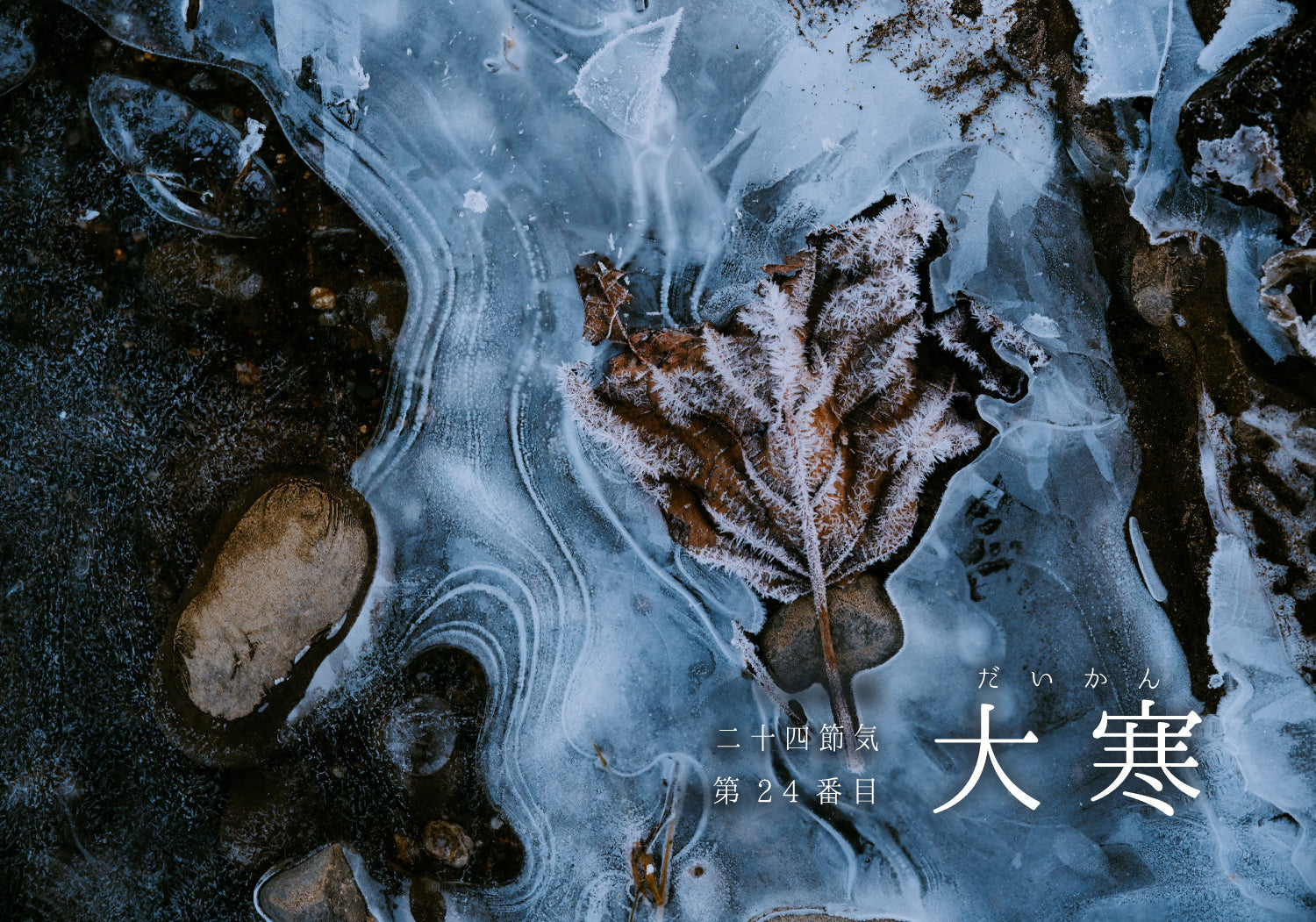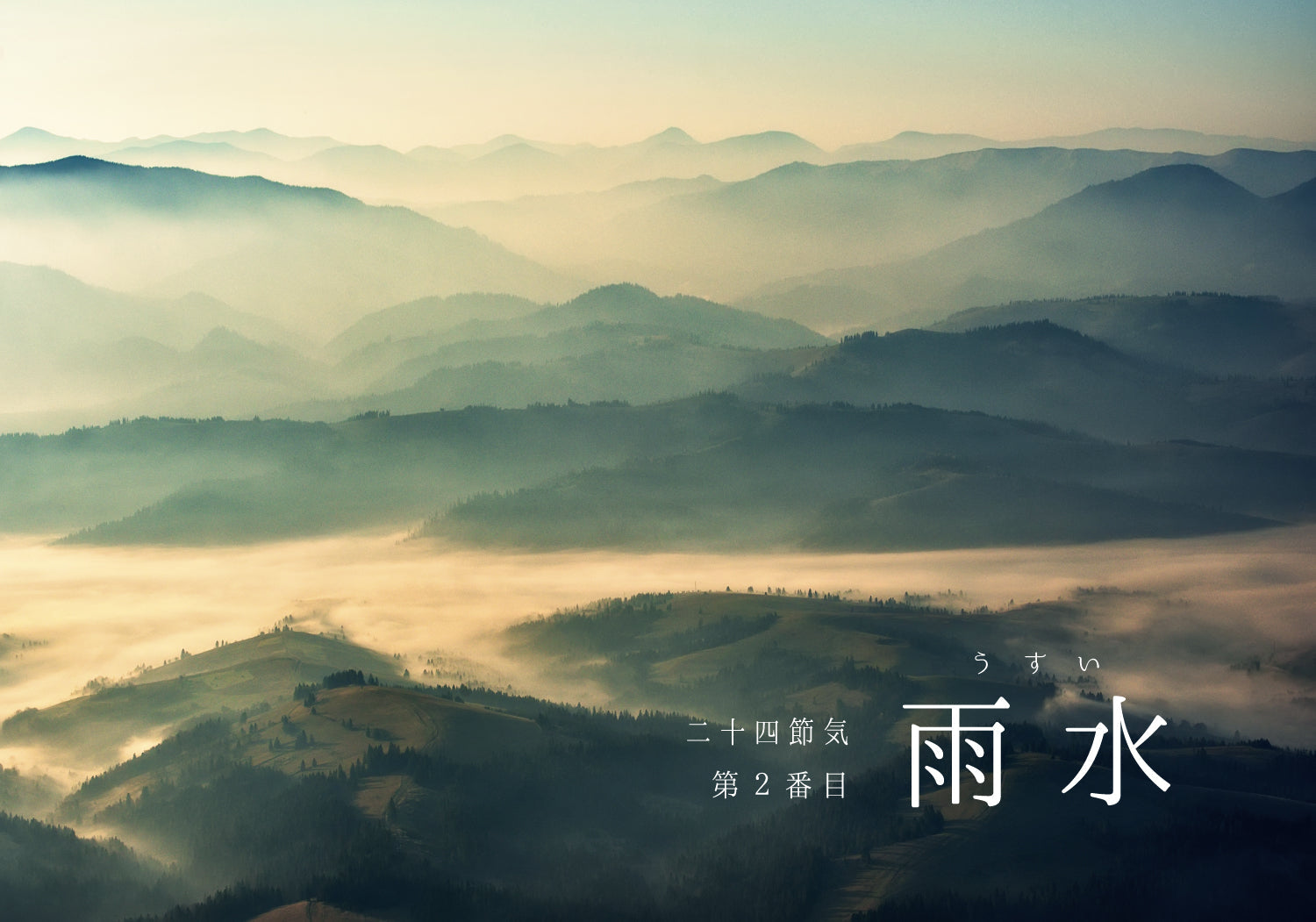12th solar term [Great Heat]
The hottest time of the year.
This year, with the announcement of the end of the rainy season, the summer heat is about to begin in earnest.
The period consisting of the previous solar terms, "Shosho" and "Taisho," is collectively called "Shochu," and it is around this time that summer greeting cards are sent.
For summer greetings, please see the previous solar term, "Shosho."
Other events held during the Great Heat include the miscellaneous festival of Doyo.
Doyo - Doyo
"Doyo" is an indicator that was established in addition to the 24 solar terms in order to more accurately grasp the change of seasons, and these are collectively called miscellaneous seasons.
In addition to the Doyo period, other miscellaneous festivals include Setsubun, Higan, Shabi, and Yasohachiya.
When you hear the word "doyo," many people probably think of "Doyo Ushi no Hi." Perhaps that's why it has a strong image of summer, but just like there are four Setsubuns a year, there are also four doyos a year.
These correspond to the 18-day period before the beginning of spring, summer, autumn, and winter, respectively, and we are currently in the doyo period leading up to the beginning of autumn.
The origin of the Doyo
Doyo is based on the Yin-Yang and Five Elements philosophy that was introduced from China.
In the Yin-Yang and Five Elements philosophy, the natural world is considered to be made up of five elements: wood, fire, earth, metal, and water. The seasons were then assigned to these five elements, with spring representing wood, summer representing fire, autumn representing metal, and winter representing water. Earth was assigned to the 18 days before the beginning of the seasons, which are the beginning of spring, summer, autumn, and winter, and it was said that the earth energy was at its peak during the summer, which was called the "earth-rich use of the day," and this became the "earth use."
During the doyo period, which marks the change of seasons, various events and customs are observed in addition to eating eel.
Events and customs related to Doyo
●Airing out insects during the Doyo period
"Doyo no Mushi-boshi" is a practice carried out at the end of the rainy season to protect clothes and books from pests and mold. On a dry day after consecutive sunny days, clothes are hung out to dry in the shade in a well-ventilated place to let air in.
During this period, no water is allowed in the rice paddies, leaving the soil cracked. This is said to have the effect of suppressing the growth of bacteria and allows the rice roots to take hold firmly.

●Doying during the summer
Like airing to prevent insects, doyo drying refers to drying in the sun on dry days after a string of sunny days, which is essential for making umeboshi.
Drying during the doyo period sterilizes the fruit, allowing it to be stored for a long time. It is also said that the flesh becomes softer, the color becomes brighter, the flavor becomes more intense, and the taste becomes mellower.

Around the time of Doyo, the rainy season ends, the temperature suddenly rises, and it becomes a time when it's easy to get sick, so if you keep in mind the wisdom of the past and imagine staying comfortable and healthy, it may make your time at home more enjoyable.
*
The summer period on the calendar begins on May 5th, the beginning of summer.
"Shoman"
Midsummer "Boshu"
"Summer Solstice"
Late Summer "Shosho"
"Great Heat"
It will be.
The next solar term, Risshu, marks the beginning of autumn on the calendar.
Meanwhile, from July to August, many festivals (summer festivals) are held across the country, making them lively seasonal events all over the country.
The purpose and meaning of each festival is different, so they change depending on the position of the organizers and the social situation.
-
Festivals
An event or festival in which gods, Buddhas, ancestors, etc. are worshiped with gratitude and prayer.
The subject matter is diverse. It is also used as a general term for events .
-
Shinto rituals
A solemn ceremony or ritual involving service to God or prayer.
The shrine's chief priest is the main organizer.
-
Kami-nigiwai
It is held for the purpose of showing it to the public, and is mainly attended by parishioners.
There are many different types of festivals.
·portable shrine
・Float
・Festival music
・Fire Festival
・Bon Odori
·firework
And more.
The origin of the festival is said to be recorded in a myth called "Amanoiwagakure" in the historical book Kojiki.
Since ancient times, the Japanese have believed in the idea of " Yahorozu no Kami" (eight million gods) , that gods reside in all things. As an agricultural people who lived in harmony with nature, the Japanese believed that gods reside in the sun, stars, clouds, sea, mountains, rivers, animals, plants, and everything else.
Amaterasu Omikami is the sun goddess who illuminates the world.
His younger brother, Susanoo-no-Mikoto, was the god of the sea and lived with many other gods.
Susanoo no Mikoto was a rough man who was always causing trouble for those around him.
Amaterasu Omikami was heartbroken by this and hid herself inside a cave.
The world without the sun god quickly became a dark and disaster-filled place.
The eight million gods, at their wit's end, discussed the matter and came up with a solution. They decided to hold a party in front of the cave to invite the sun god out. Attracted by the fun atmosphere, the sun god came out. And the world was once again able to regain its brightness.
This revelry is said to be the beginning of the festival.
This shows that no matter how dark the disaster, if everyone pools their wisdom and has fun together, things can turn out for the better and every night will end.
They pray to these gods and hold festivals for them.
In modern times, shrines are not only places to pray to God, but also places to interact with local people and society, and a place to learn about history and culture.
This is probably the time of year when you're having conversations like, "Let's go to a festival we've never been to before this summer," or "Let's go to the local festival again this year."
In recent years, there has been a tendency to refrain from doing things due to the coronavirus, but after such times, I sincerely hope that people can come together and enjoy culture, and realize that it enriches their lives.
*
The time of Great Heat is represented in the 72 seasonal divisions as follows:
First Season: Paulownia flowers begin to bloom

Paulownia trees produce pale purple flowers from April to May, and once the flowers have finished blooming, hard egg-shaped fruits begin to form. The flowering represents the process of becoming fruit.
Next season: "The earth is moist and hot"

This is the time of year when the weather is so hot that the moisture in the soil becomes sticky.
This kind of humid heat is called "jokusho" and is a seasonal word for late summer.
Last Season (Performed during heavy rain)







